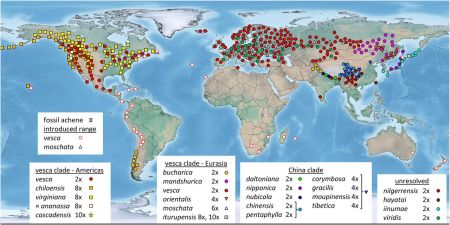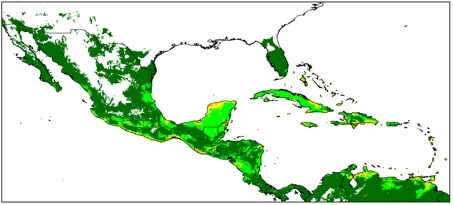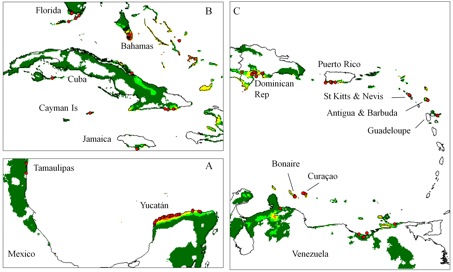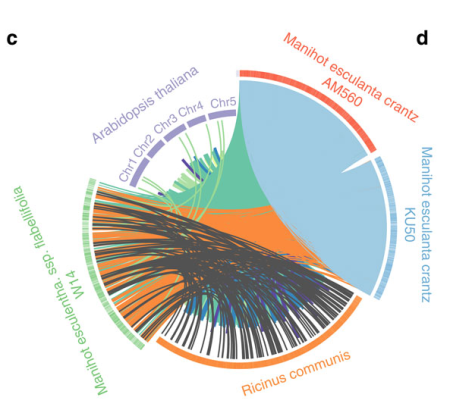We’re trying something new for us this week. Dr Geo Coppens co-authored an interesting paper recently which brings together a number of our concerns: domestication, diversity, crop wild relatives, spatial analysis… He’s written quite a long piece about his research, which we’ll publish here in three instalments, over the next few days days, starting today. Enjoy!
 Niche Modelling has been increasingly coupled with genetic studies for the study of plant domestication and/or diffusion (e.g. Thomas et al., 2012, on cacao; Russell et al., 2014, on barley). However, there has been relatively little interest in the effects of domestication and cultivation on distribution. Comparing the distributions of wild and cultivated hog plums in Meso- and Central America, Miller and Knouft (2006) found that the crop’s environmental range was significantly wider than that of its wild relatives observed in the dry forests, which was suspected to result from selection and attendant adaptation under domestication.
Niche Modelling has been increasingly coupled with genetic studies for the study of plant domestication and/or diffusion (e.g. Thomas et al., 2012, on cacao; Russell et al., 2014, on barley). However, there has been relatively little interest in the effects of domestication and cultivation on distribution. Comparing the distributions of wild and cultivated hog plums in Meso- and Central America, Miller and Knouft (2006) found that the crop’s environmental range was significantly wider than that of its wild relatives observed in the dry forests, which was suspected to result from selection and attendant adaptation under domestication.
This interpretation seems related to a combination of common ideas about species habitats, distribution modelling and the effects of human selection and diffusion on crop adaptation. Most correlative species distribution modelling has been based on the use of abiotic environmental variables, and the best documented are climatic ones. As a result, many authors think of their models in terms of climatic envelopes corresponding to the physiology and phenology of species, and remain cautious about their capacity to capture biotic effects. Therefore, it appears logical to relate the wider crop environmental range, as compared to their wild relatives, to adaptive selection under/after domestication.
Results obtained on perennial cotton from Mesoamerica and the Caribbean underline the interest of a more ecological interpretation (Coppens d’Eeckenbrugge and Lacape, 2014). Among the four independently domesticated cotton species, Gossypium hirsutum L. is by far the most widely cultivated, even in warm temperate conditions, at latitudes of up to 30°. It shares its AD allotetraploid genome with the other American domesticated cotton, G. barbadense L., native to Ecuador and Peru, and three wild species, G. darwinii Watt (Galapagos), G. mustelinum Miers ex Watt (Northeastern Brazil), and G. tomentosum Nutt. ex Seem. (Hawaii). The absence of American diploid species bearing the A genome led Hutchinson et al. (1947) to the conclusion that the A parent was an African domesticate brought by man, implying that the first allotetraploid cottons were cultivated.
On the contrary, Fryxell (1979) and Sauer (1967) recognized wild populations of G. hirsutum in Yucatán and various localities in the Caribbean. The existence of these “truly wild cottons” (TWC) was progressively substantiated by their particular seed traits (Stephens, 1965) and the isozyme study of Brubaker & Wendel (1994), indicating that the TWC populations of northern Yucatán were the likely ancestors of Mesoamerican cultivated races. More recently, molecular genetics supported Fryxell’s views, confirming that all five allotetraploid cotton species originated from a single hybridization event that took place during the Pleistocene, some 1-2 million years ago (Wendelet al. 2010). However, no systematic studies were undertaken and TWC populations were very poorly represented in subsequent studies of tetraploid cotton genetic resources. In particular, the status of TWC populations from the Caribbean was not clarified. A major practical problem was the difficulty to distinguish TWC populations from feral (secondarily wild) populations.
To be continued…



